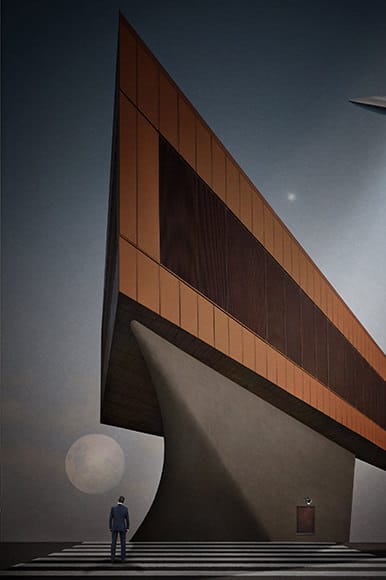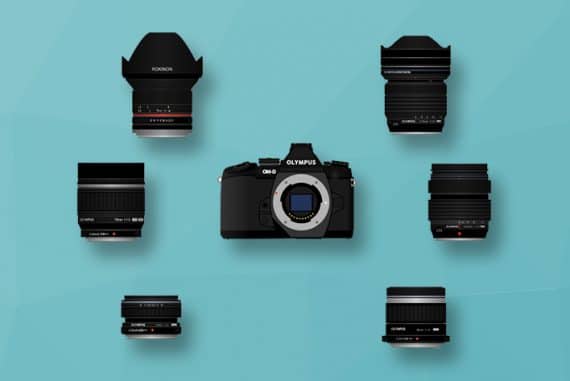











Lisa Saad
Commercial | Last Updated: May 10, 2021
Hello, my name is Lisa Saad and I have been a professional illustrative, advertising and commercial photographer now for 31 years, specialising in people, product, locations and composite photography which has allowed me to shoot all over the world in a commissioned and non-commissioned capacity.
My kit varies depending on the type of shoot that I am shooting at any given time. From what you can see in the pic is pretty much what I use every week. There is much more to my kit, other lights, reflectors, tripods, many stands, diffusers and light modifiers and because I customise the equipment for each shoot I am able to pick and choose what I require.
1. Nikon D3, Nikon D800
and Nikon D5
: are my main shooting cameras. The D5
is the workhorse that I rely on and I shoot mostly on. The D800
is great especially if I need to produce a lager file for the client or if I require more information for a composite, it is then used instead of the D5
. The D3
I have kept as a backup camera and we use as a second shooter camera on events if required. When shooting in studio and on most locations, I always shoot tethered to either my MacBook Pro or iMac.
2. Tamron 70-200mm f/2.8 Di VC USD G2: is one of the two main lenses I use for most of my work. This lens is reliable, easy to use and mostly gives me the look and feel that I am after. It has incredible sharpness with a soft natural feel, minimal flare and I always use its lens hood. The improved VC (Vibration Compensation), faster AF speed and accuracy, and shortened MOD (Minimum Object Distance) for greater flexibility has allowed me to rely on the lens quite a bit in terms of getting sharps and reducing camera shake. I primarily use this lens for people portraits and location shoots where I need the background to be a supporting element in an image.
3. Tamron 24-70mm f/2.8 Di VC USD G2: is the other of my two main lenses. This lens is used mainly for product, interior, exterior, some portraits and is the general go-to lens for most shooting situations. Its sharpness is right on and quick plus it’s cutting-edge autofocus technology is enhanced by category-leading vibration compensation, with a CIPA image stabilization level of 5 stops. Favorable colour rendition, no light fall-off and a workhorse especially when I have asked it to perform 8 hours a day for 5 days shooting over 3500 products. This is also a lens I use when shooting video.
4. Tamron 15-30mm f/2.8 Di USD: I have been using this quite a bit for architecture work and for some interiors. I tend not to use a lens that’s too wide as it pushes the perspective too much which can misrepresent a location. But for exteriors, shooting the architecture for my series The Anonymous Man, and capturing overview shots and tight situations, this lens works very well – especially as it controls aberrations, ghosting and flare for better vivid images.
5. Tamron 90mm Macro f/2.8 Di MACRI 1:1 VC USD: has become one of my favorite lenses to use for food, people, products, some fashion. It has incredible sharpness and beautiful depth of field. It’s versatile and very easy to use and what you see is what you get. Plus it’s 1:1 in life size photography and has maintained its legendary bokeh with elegance.
6. Tamron 85mm f/1.8 Di VC USD and Tamron 45mm f/1.8 Di VC USD HF012
: These fixed focal lenses are in my kit as lenses I use for environmental portraits, shooting elements for my composites, some food photography and when shooting video.
7. Olympus OM-D E-M1 Mark II: is new to my kit but has become an integral part especially when I am shooting my corporate documentary. Micro Four Thirds is now becoming an interest to some professionals and there is good reason to seriously look at it as an alternative to your camera gear. This camera is amazing, it’s quiet, lightweight, simple to use, has a beautiful look and feel to the files, transitions well between my editing software; Capture One and Photoshop and when I have used this camera in conjunction with my DSLR there has been no discernable variations to file integrity, colour rendition and file output. Basically, my Olympus gear is a mirror (some variations of course) to my DSLR kit.
8. Olympus OM-D E-M10 Mark III: back up camera to the Olympus OM-D E-M1 Mark II
. It has some functionality differences but works just as well. It’s even lighter but still a well built and reliable camera.
9. Olympus 12-40mm f/2.8 PRO: is my go to lens that I use for most shooting and as mentioned above, I will use this instead of or in conjunction with my DSLR kit. I have used this lens for corporate events, food, location interiors, portraits and elements for my composite images. This lens is a flexible zoom covering the popular focal length range and is part of the M. Zuiko Digital ED lenses has a high refractive index and reduces both chromatic and spherical aberrations throughout the zoom. Early in 2018 I was shooting in Chicago, New York City and Boston and this lens didn’t miss a beat in the cold weather. It just worked – as did the Olympus cameras with no functionality issues. Very impressive.
10. Olympus 40-150mm f/2.8 PRO: Long lens that I have used for portraits and location shoots. I have not had a client yet ask me if I have changed my gear or notice any file delivery variation. This lens is perfect to walk around with on camera or in your bag. It’s fast and has a super convenient focal length equivalent to a telephoto zoom of 80-300mm.
11. Olympus 60mm MACRO ED f/2.8 MSC: This has fast become my favorite lens in the Olympus kit. I have shot just about everything with this lens including food, close-up detail shots, people, some locations and of course elements for my composites. This lens offers a maximum 1:1 magnification and a 7.5″ minimum focusing distance to permit photographing close subjects with fine detail and has a Focus Limit Switch which is very useful when working in a close focus range
12. Olympus 45mm f/1.2 PRO: My ideal portrait-length lens from my Micro Four Thirds kit which pairs the desirable 90mm-equivalent focal length has an ultra-fast f/1.2 maximum aperture. The combination of the slightly narrow field of view and bright aperture enable producing distinct shallow depth of field imagery. It also suits working in difficult lighting conditions. Also, part of the new M.Zuiko Pro Series which was built with consistency in mind so photographers can switch between lenses in the same series and get consistency.
13. Olympus 25mm f/1.8 MSC: is my normal length prime lens from the Micro Four Thirds kit, equivalent to a 50mm. The normal field of view is complemented by a fast f/1.8 maximum aperture for controlling depth of field and producing selective focus effects plus, it benefits working in difficult lighting conditions.
14. Olympus 14-42mm f/3.5-5.6: otherwise known as the “pancake lens” is great lens especially when attached to an Olympus camera that I am carrying daily in my hand bag. It’s very short in physical length, quick focus and sharp.
15. Olympus Flash FL 900R: I use a lot of artificial light in my work and this flash compliments the Olympus kit allowing me to shoot corporate functions as well as some indoor portrait lighting setups.
16. 2 x Phottix Indra 500 TTL Studio Light with Phottix INDRA500 Battery Pack E0805
: my portable flash gear that I use for all shooting conditions. I use these with and without modifiers and with the Odin II controller, I can also use the Mitros+ flashes. These are fast, have high-speed sync functionality and have been the most significant upgrade to my flash gear for quite some time. The battery pack lasts for up to 900 flashes at full capacity, I have an ac power adapter if I need and they are compact, easy to use and extremely reliable.
17. 2 x Phottix Mitros+: my speedlights that I use either on or off the camera. Very fast and reliable, however I have found best to use non-rechargeable batteries as they tend to heat up and not perform as good as the flash itself.
18. Phottix Odin II TTL Flash Trigger Transmitter E0811: trigger for the Indra 500
and Mitros+
flash equipment.
19. Phottix Extension Tubes for Nikon: I have been using these extension tubes for close-up work as well as some food photography.
20. X-Rite Colour Checker: A must for colour management. It gets used each time I shoot regardless of if it’s a studio or location shoot. Colour management is important to my workflow.
21. Tether Tools: I would not shoot without tethering in studio or location unless there is some extreme reason. Tethering allows the shoot to flow easily and helps with client relations especially when selecting images and giving retouching briefs.
22. Manfrotto Polariser Filter and Variable ND: for all my architecture and location shoots.
23. 2 x Gary Fong Speed Light Diffusers: I use these diffusers on my speed lights. Keeps the flash soft and overall diffused.
24. Manfrotto 055 Tripod and Manfrotto MHXPRO-3W Tripod head
: reliable and lightweight tripod but still able to handle the rigors of shooting all day.
KIT:
Nikon D3
Nikon D800
Nikon D5
Tamron 70-200mm f/2.8 Di VC USD G2
Tamron 24-70mm f/2.8 Di VC USD G2
Tamron 15-30mm f/2.8 Di USD
Tamron 90mm f/2.8 Di VC USD Macro
Tamron 85mm f/1.8 Di VC USD
Tamron 45mm f/1.8 Di VC USD HF012
Olympus OM-D E-M1 Mark II
Olympus OM-D E-M10 Mark III
Olympus 40-150mm f/2.8 PRO
Olympus 45mm f/1.2 PRO
Olympus 25mm f/1.8 MSC
Olympus 14-42mm f/3.5-5.6
Olympus Flash FL 900R
2 x Phottix Indra 500mAh Li-ion Cell
Phottix Indra 500 TTL Studio Light
2 x Phottix INDRA500 with Battery Pack E0805
2 x Phottix Mitros+
2 x Phottix Odin II TTL Flash Trigger Transmitter E0811
Phottix Extension Tubes
X-Rite Colour Checker
Tether Tools
Manfrotto Polariser Filter
Variable ND
2 x Gary Fong Speed Light Diffusers
Manfrotto 055 Tripod
Manfrotto MHXPRO-3W Tripod head
Various Batteries

Check out these 8 essential tools to help you succeed as a professional photographer.
Includes limited-time discounts.












